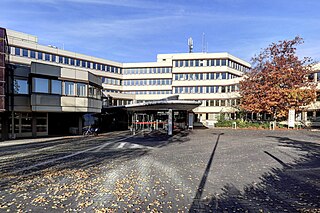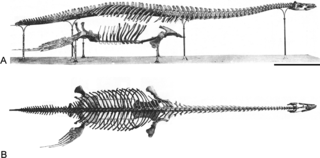
Westphalia is a region of northwestern Germany and one of the three historic parts of the state of North Rhine-Westphalia. It has an area of 20,210 square kilometres (7,800 sq mi) and 7.9 million inhabitants.

North Rhine-Westphalia or North-Rhine/Westphalia, commonly shortened to NRW, is a state (Land) in Western Germany. With more than 18 million inhabitants, it is the most populous state in Germany. Apart from the city-states, it is also the most densely populated state in Germany. Covering an area of 34,084 km2 (13,160 sq mi), it is the fourth-largest German state by size.
Hochsauerlandkreis is a Kreis (district) in the east of North Rhine-Westphalia, Germany. Neighboring districts are Soest, Paderborn, Höxter, Waldeck-Frankenberg, Siegen-Wittgenstein, Olpe, Märkischer Kreis.
Höxter is a Kreis (district) in the east of North Rhine-Westphalia, Germany. Neighboring districts are Holzminden, Northeim, Kassel, Waldeck-Frankenberg, Hochsauerland, Paderborn, and Lippe.
Paderborn is a Kreis (district) in the east of North Rhine-Westphalia, Germany. Neighboring districts are Gütersloh, Lippe, Höxter, Hochsauerland, and Soest.

Lippe is a Kreis (district) in the east of North Rhine-Westphalia, Germany. Neighboring districts are Herford, Minden-Lübbecke, Höxter, Paderborn, Gütersloh, and district-free Bielefeld, which forms the region Ostwestfalen-Lippe.

Barntrup is a town in the Lippe district of North Rhine-Westphalia, Germany. It has an area of 59.46 km2 and 8,501 inhabitants (2019). It lies 40 km east from Bielefeld and 9 km west from Bad Pyrmont at the east border of NRW to Lower Saxony.

Höxter is a town in eastern North Rhine-Westphalia, Germany on the left bank of the river Weser, 52 km north of Kassel. It lies the heart of the Weser Uplands. The town itself has a population of 15,000; the district, 30,000. It is the seat of the Höxter district. Historical place names of Höxter are Hoxer and Huxaria.

Beverungen is a town in Höxter district in North Rhine-Westphalia, Germany.

Marienmünster is a town in Höxter district in North Rhine-Westphalia, Germany.

Brancasaurus is a genus of plesiosaur which lived in a freshwater lake in the Early Cretaceous of what is now North Rhine-Westphalia, Germany. With a long neck possessing vertebrae bearing distinctively-shaped "shark fin"-shaped neural spines, and a relatively small and pointed head, Brancasaurus is superficially similar to Elasmosaurus, albeit smaller in size at 3.26 metres (10.7 ft) in length as a subadult.
Eurycleidus is an extinct genus of large-bodied rhomaleosaurid known from the Early Jurassic period of the United Kingdom. It contains a single species, E. arcuatus.
Paleontology or palaeontology is the study of prehistoric life forms on Earth through the examination of plant and animal fossils. This includes the study of body fossils, tracks (ichnites), burrows, cast-off parts, fossilised feces (coprolites), palynomorphs and chemical residues. Because humans have encountered fossils for millennia, paleontology has a long history both before and after becoming formalized as a science. This article records significant discoveries and events related to paleontology that occurred or were published in the year 2011.

Lusonectes is an extinct genus of microcleidid plesiosaur from the Early Jurassic (Toarcian) São Gião Formation of Portugal.
Otterbach is a river of Lower Saxony and of North Rhine-Westphalia, Germany. It is 8.1 km (5.0 mi) long and is a right tributary of the Weser near Holzminden.

Bühne is a village and constituent community (Stadtteil) of the East Westphalian town Borgentreich in Höxter district and Detmold region in North Rhine-Westphalia, Germany. Bühne has approximately 1,200 inhabitants. With 23 km² it is the second largest constituent community of Borgentreich.

This timeline of plesiosaur research is a chronologically ordered list of important fossil discoveries, controversies of interpretation, taxonomic revisions, and cultural portrayals of plesiosaurs, an order of marine reptiles that flourished during the Mesozoic Era. The first scientifically documented plesiosaur fossils were discovered during the early 19th century by Mary Anning. Plesiosaurs were actually discovered and described before dinosaurs. They were also among the first animals to be featured in artistic reconstructions of the ancient world, and therefore among the earliest prehistoric creatures to attract the attention of the lay public. Plesiosaurs were originally thought to be a kind of primitive transitional form between marine life and terrestrial reptiles. However, now plesiosaurs are recognized as highly derived marine reptiles descended from terrestrial ancestors.
The Ornatenton Formation is a Jurassic marine formation in Germany that is middle Callovian in age. The formation represents a shallow marine environment.

Arminisaurus is a genus of pliosaurid plesiosaur that lived during the Lower Jurassic in present-day Germany. With Westphaliasaurus and Cryonectes, Arminisaurus is only the third plesiosaurian taxon that was described from the Pliensbachian stage. The holotype and only known specimen is a fragmentary skeleton, comprising an incomplete lower jaw, teeth, vertebrae and elements from the pectoral girdle and the paddles. The animal had an estimated body length of 3–4 metres (9.8–13.1 ft).



















